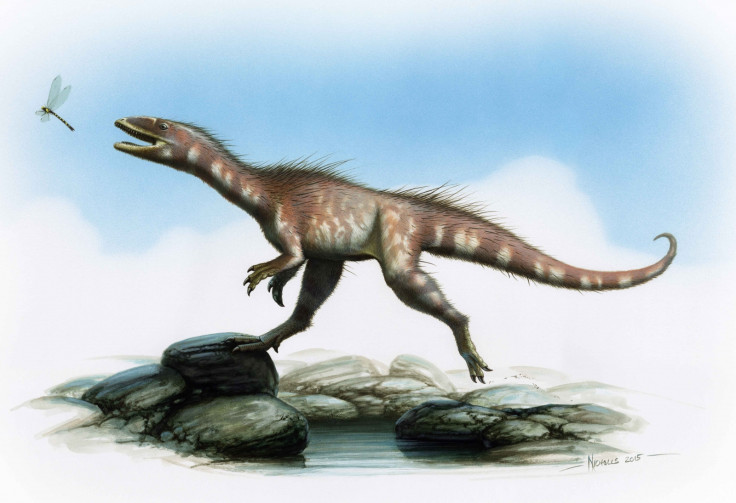Tyrannosaurus Jones? New type of dinosaur closely related to the T.rex discovered in Wales

A new type of dinosaur closely related to the tyrannosaurus rex has been discovered in Wales.
No, it is not the Tyrannosaurus Jones, but the newly discovered species, which roamed the earth around 130 million years ago, is the oldest Jurassic dinosaur to be discovered in the UK and the first meat-eating dinosaur to be found in Wales.
Discovered on the beaches of Penarth, near to the Vale of Glamorgan, the fossilised remains were analysed by a team of experts at the University of Manchester, University of Portsmouth and the National Museum Wales.

It is believed to have lived some 70 million years before its 'cousin', the T-rex, and this specific one died when it was just 20cm tall. The experts believe that it died young and if it had grown to full size, it could have reached 80cm. It looked similar to its much larger relative, but could have been slightly furry, slimmer and around 11m shorter.
The remains of the previously undiscovered species were found spread out across five slabs of rocks. The experts theorise that it died close to the sea, was then dragged out into the ocean and fell to the bed, where it became fossilised.
Dr David Martill, reader in palaeobiology at University of Portsmouth, said: "Although the bones were scattered on a few slabs of limestone, they were in excellent condition, and much of the skull appeared to be there. The teeth were small, but needle-sharp, slightly curved and with the most wonderful steak knife serrations on their edges."
Dr John Nudds, senior lecturer in palaeontology at The University of Manchester, added: "It is very rare to find this type of dinosaur at all and never before in Wales. In fact it is only the second dinosaur ever found in Wales. Theropods were vicious hunters who would prey on others. They were evolving rapidly at the start of the Jurassic period, but are only known from a few specimens worldwide. So this is a very exciting finding that could tell us a lot about how these species evolved."
The remains are on display at the National Museum Cardiff until 6 September.
© Copyright IBTimes 2024. All rights reserved.






